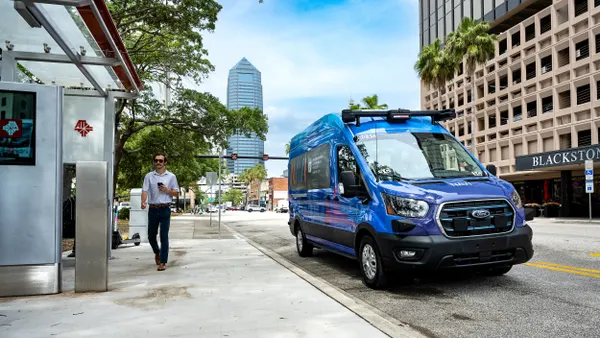Dive Brief:
- Voom's helicopter booking service has launched in the San Francisco Bay Area, its first U.S. market. The service will offer on-demand helicopter rides to five Bay Area airports.
- The company is also launching Voom for Business, a specialized platform to help companies manage their employees' travel. It allows a team member other than the passenger to book trips and simplifies billing.
- Voom had previously only operated in São Paulo and Mexico City. However, it was founded and is headquartered in San Francisco.
Dive Insight:
Voom passengers use the app or online platform to book a helicopter seat up to an hour in advance. Users pay per seat and pool with others traveling to the same destination.
Voom, owned by Airbus, is the app-based service that connects customers with helicopter trips, but it does not operate its own fleet. It works with vetted, third-party helicopter operators and helipads that provide the flight. This makes the service different than Uber Copter, which launched in New York City earlier this year.
The announcement about Voom beginning its service in the United States comes on the same day Uber's CEO made a big announcement about Uber Copter. Instead of that service only being available to elite users who are Platinum and Diamond rewards members, Uber Copter will be available to every Uber user in New York City starting in October.
Critics scoffed at the idea of short-trip, on-demand helicopter service as a way for travelers to zip across a city in minutes and avoid traffic. But Voom's entrance to the U.S. market a mere months after Uber Copter indicates it could be a growing trend. Blade is another operator that provides service in New York, Los Angeles and San Francisco.
Finding the right price point for the convenience is important for on-demand helicopter services to have staying power. When Uber announced it would launch service at $200-225 per person, per ride, it was criticized as a luxury form of transportation that the average person could not use. Few details have been released about that service's expansion, but adding a wider user base eventually could make it more competitively priced.
If more operators continue entering the space and expanding to more U.S. cities, passengers could view price points as a prime differentiator between the similar services.










